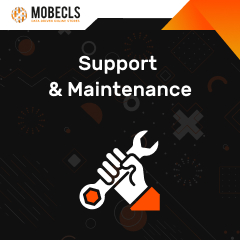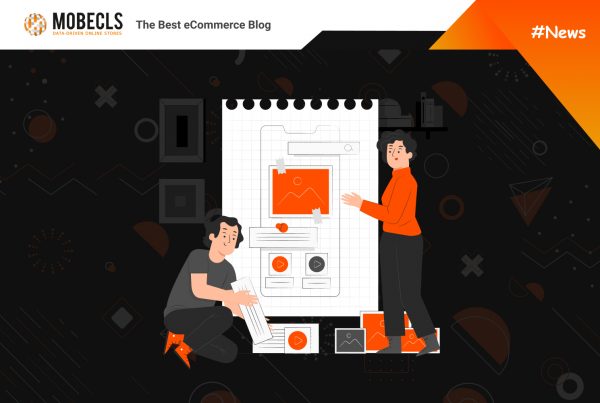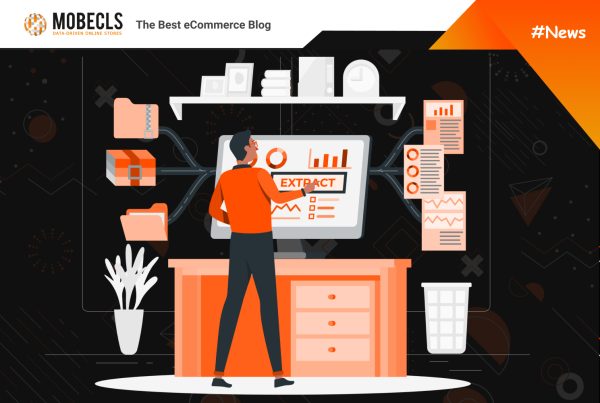Order fulfillment is the sequence of steps involved in processing an order until the customer is satisfied and making the necessary changes in the stock depot. This may also include processing declarations and readjusting records. The fulfillment process is the complete journey your inventory takes from being received at your warehouse to being shipped to the customer’s door. These include the arrival of a shipment of goods, its breakage for storage, the receipt of orders for processing, the picking of products from the shelves, the packing of orders into boxes, and the shipment of these boxes.
Order Fulfillment Strategies and Options
Merchant Fulfillment
Fulfillment by Merchant (FBM) occurs when the seller has complete control over the handling and shipping process. Rather than paying a service charge and shipping merchandise to the e-commerce platform, the seller utilizes his or her own resources to transport the things directly to the buyer. When a seller uses FBM, he or she gains total control over the whole process, from purchasing to shipping and receiving.
Advantages:
- Amazon Prime badge
- Warehousing
- Inventory management
Disadvantages:
- Less control over your inventory
- Unable to use your own branding
- Additional fees include fulfillment fees and inventory management fees
Dropshipping
Dropshipping is a three-way system between a customer, a supplier, and a merchant. When a customer places an order on an online store, the e-merchant transmits the information to his supplier who is responsible for managing the stock and shipping the order. As an e-merchant, you pay your supplier at the wholesale price and you collect the end customer with a (small) margin.
Advantages:
- Low starting costs
- Minimal overhead
- No inventory to hold
- Very little effort required
Disadvantages:
- Minimal profit margins
- Low barriers to entry
- Inefficient supply chain and shipping
- Fulfillment errors go unsupported
- Supplier issues can cause a lot of problems
Third-party fulfillment
Third-party fulfillment refers to the outsourcing of e-commerce logistical procedures such as warehousing, item picking and packaging, inventory management, order delivery, and return management. With the tools and infrastructure to automate shipping and fulfillment, 3PL companies enable eCommerce retailers to achieve more.
Advantages:
- Faster fulfillment
- More time to spend on money-making tasks
- Reduced transit times
- Negotiated shipping carrier rates
- Built-in inventory and order management tools
- Advanced data and analytics
- Access to fulfillment expertise and support
Disadvantages:
- Can be challenging to find the right 3PL for your business
Tips on Improving Order Fulfillment
1. Inventory management: Know your capacities to anticipate
Before putting anything in place in your warehouse, it is important to know your own capacities and to make forecasts on the past months or years of your activity.
By analyzing the figures from previous periods, you will be able to organize your sales and the supply of goods from suppliers. Use the forecasts to determine the current flagship products and anticipate demand, supplier orders, replenishment, and the purchase of supplies (by seasonality, model, etc.).
Also, keep in mind the key dates for eCommerce to be able to handle the increase in volumes stored during the year. Weekend sales should not be forgotten either, to avoid being overwhelmed by Monday and falling behind during the week.
2. Organize your order preparation space
The danger during the preparation of commands is to multiply human errors, such as reversing several orders or sticking a label on the wrong package. This is why it is better not to rush, and on the contrary to think about the organization of the supply chain to be put in place.
3. Optimize the storage system
Keeping control over your stock storage is essential for your e-commerce business. For this, quantifying and counting stocks in real-time over the period is useful.
- If you use logistics management software (CMS or WMS type), don’t hesitate to look at the complementary applications that are offered: many features will allow you to keep an eye on your stocks, from the receipt of goods to their forwarding.
- If you sell your products on several platforms (e-commerce sites, marketplaces, price comparators, etc.), we recommend providing different storage areas according to your different sales channels. Each of these locations will allow you to keep an accurate view of the items stored according to the channels.
Finally, don’t forget to note in your inventory as soon as a product leaves your stock (and from which sales channel), or you may spend a long time updating the status of your stock.
4. Pack your package well
Once you’re sure you’re putting the right product in the right package, you have to pack it. But not just anyhow! As your packages pass through the hands of several providers and travel in many trucks and places, the packaging must be resistant and suitable. To limit incidents, we recommend that you choose boxes of the size closest to that of your product (even if you have to buy several references). Remember to experiment to optimize the process and choose the formula that works best. You can even push the experience further by sending orders to yourself to see the status of the package upon receipt (delays, condition of the box and the product, etc.). Once you figure out the right way to wrap your packages, you can set standards.
5. Generate labels efficiently
Any order picking system requires good order label management. To print your labels, you can either print everything at once or print the labels in batches (as for orders, by the carrier for example). This second option increases your efficiency and limits human errors. You can then choose a place to place your label (and stick to it for all parcels), such as on the widest side so that it is easily readable by the various barcode reading machines.
6. Check (and re-check)
We can never repeat it enough: frequent checks at each stage of order preparation are absolutely necessary to:
- Increase efficiency and reduce order preparation time.
- Reduce errors and avoid dissatisfied customers or disputes to manage.
Some errors can be very detrimental to the customer relationship, and therefore to your reputation. So caution is the mother of safety, even if you have implemented some automation of order preparation!
 Mobecls team provides a wide range of eCommerce development services, starting from SEO and design to custom functionality development. Our 10+ years of Magento expertise allow us to provide unique eCommerce solutions taking into account industry and business specifics. If you want to take your business to the next level, we’re ready to help!
Mobecls team provides a wide range of eCommerce development services, starting from SEO and design to custom functionality development. Our 10+ years of Magento expertise allow us to provide unique eCommerce solutions taking into account industry and business specifics. If you want to take your business to the next level, we’re ready to help!




